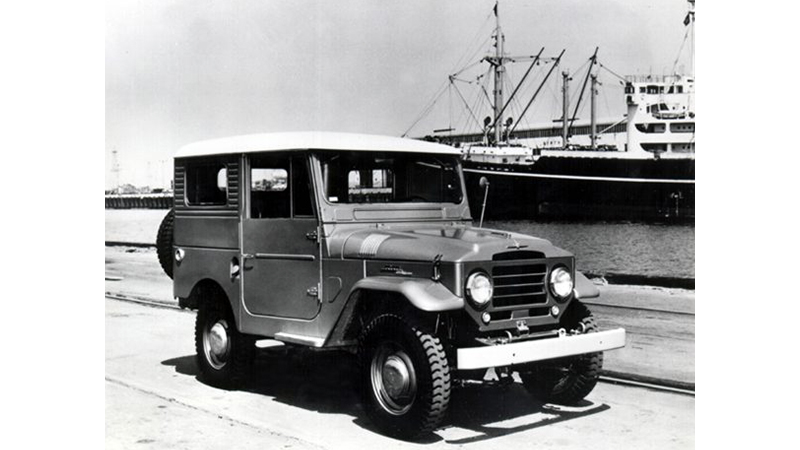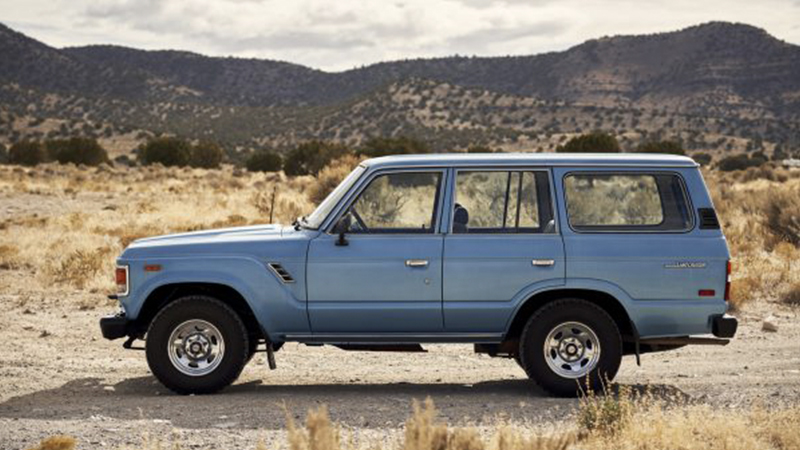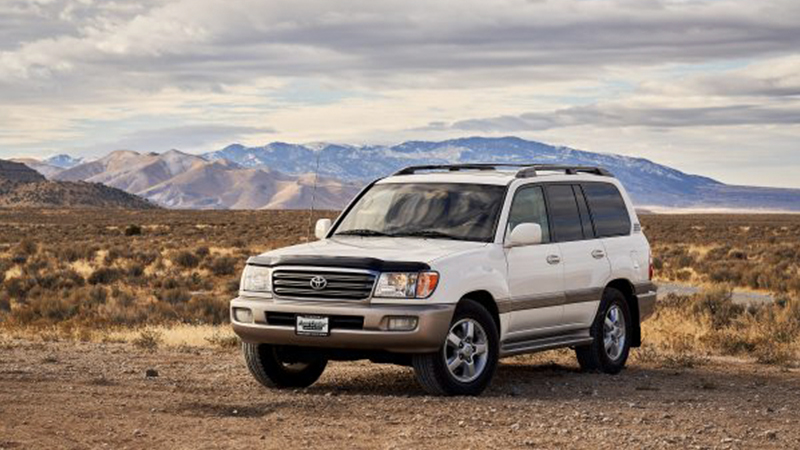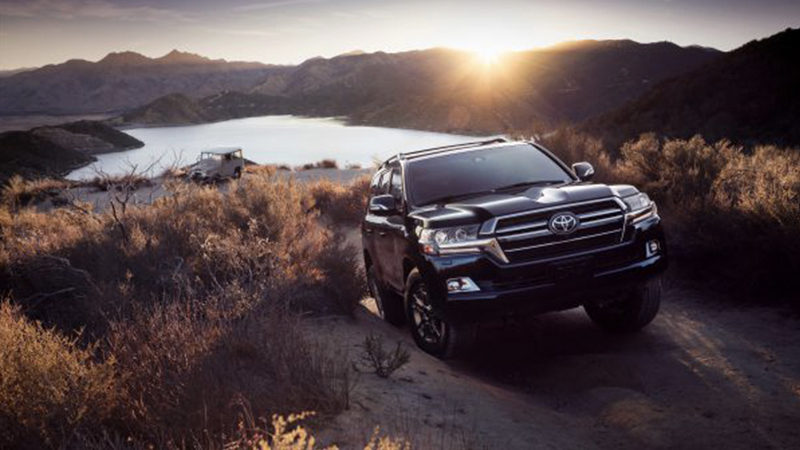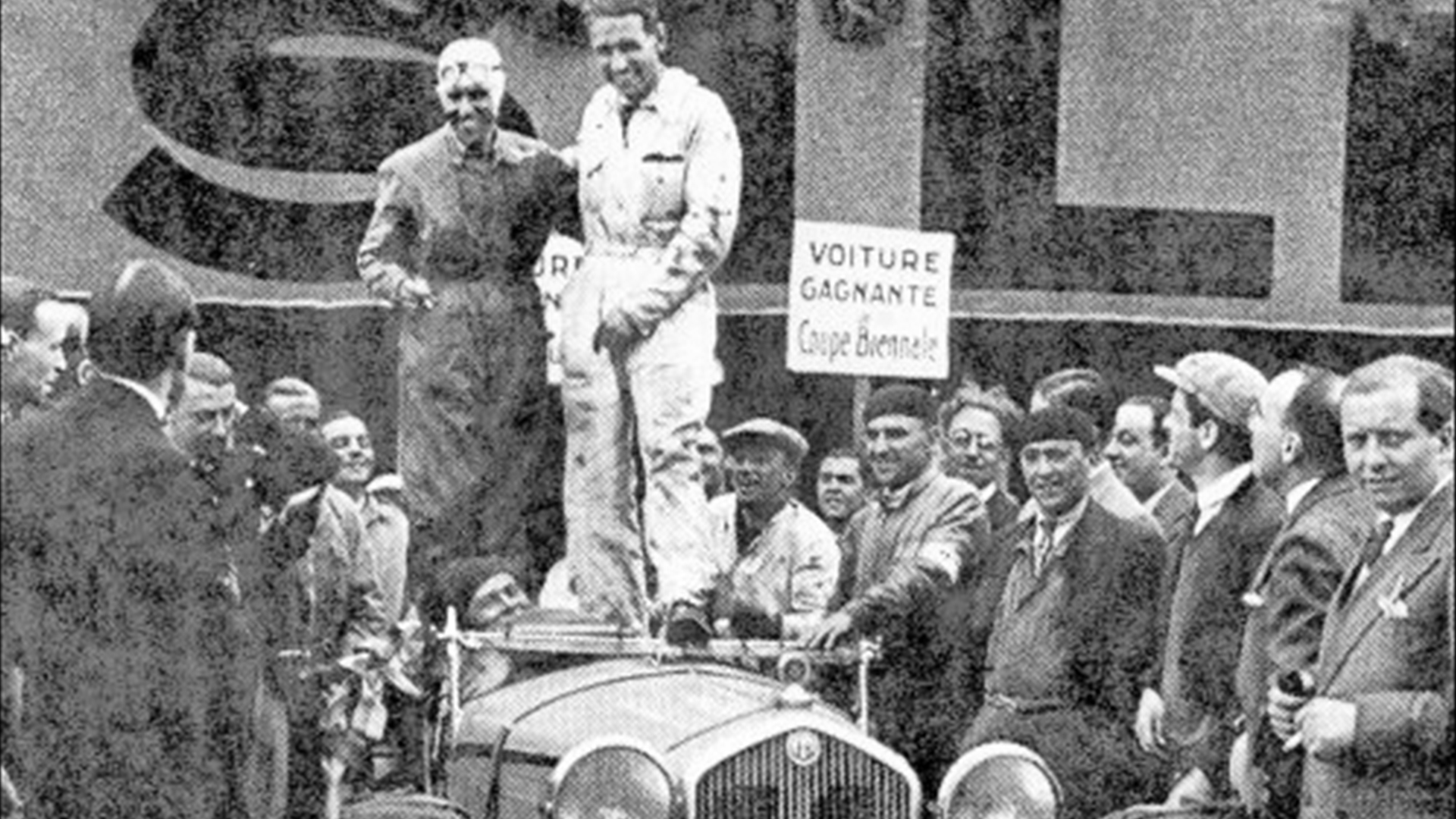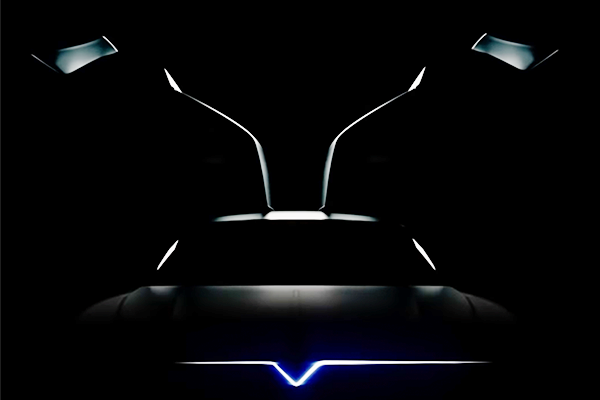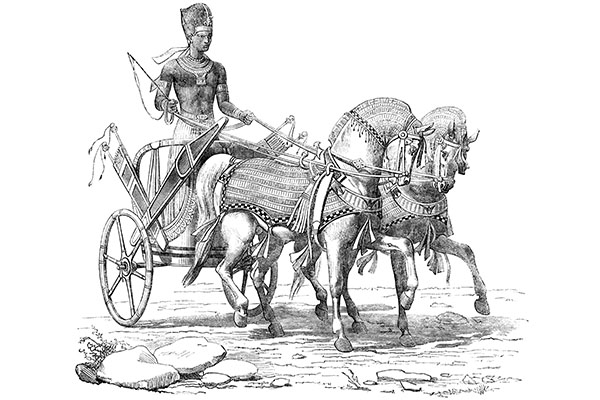With 60-plus years of development, the Toyota Land Cruiser's military roots have given way to luxurious passenger comfort.
With a rear cargo area that's equally suited to being filled with the kids' lacrosse equipment for a Saturday morning game, or retrofitted with a militia's heavy machine gun fighting in some far-flung desert region's conflict, there's a reason Toyota's Land Cruiser is as popular today among suburban U.S. families as it is Middle Eastern militias.
The Land Cruiser is the “peak of capability and comfort," according to Toyota, and fans worldwide couldn't agree more. With more than 60 years of history behind it, Land Cruiser is second only to Chevy's Suburban as the longest running SUV in production, and holds the record for being Toyota's longest continuously produced model.
WAR-TIME NEEDS LEAD TO LAND CRUISER'S DEVELOPMENT
Land Cruiser – like countless other great inventions before it – was born of necessity. Its roots trace to the Korean War, and deeper still to World War II when the Japanese Army occupied the Philippines and discovered the Americans' “Army Jeep," which they promptly shipped to Japan, ordering Toyota to manufacture something similar for wartime use. The result was Toyota's AK10 light truck.
Fast forward to the Korean War and 1951. The U.S. encourages Japan to produce a new military-type truck, reasoning that it would be beneficial to have a locally-sourced, utilitarian vehicle for use in Korea and other regional conflicts. Toyota delivers, building on the groundwork laid by the AK10 to develop the Toyota Jeep BJ – a name that would come under fire just a few years later when Jeep manufacturer Willys sued Toyota for trademark infringement. Willys won, and in 1954, Toyota renamed the Jeep BJ to Land Cruiser.
Hanji Umehara, then Toyota's director of technology, recounted in an interview years later that at the time of the renaming he was already aware of a similar sounding competitor in England – Land Rover – and that his goal was simply to arrive at a name that sounded equally dignified.
Umehara and Toyota weren't, however, the first to coin the Land Cruiser nameplate, as Studebaker produced an unrelated Land Cruiser sedan from 1934 to 1954.
THE 20 SERIES – LAND CRUISER'S U.S. DEBUT
U.S. consumers would have to wait until 1958 to get their hands on the first Land Cruiser available for sale through Toyota Motor Sales, U.S.A., Inc. after the subsidiary's formation in late 1957. And, judging by sales that very first year, no one could have predicted Land Cruiser's enduring popularity among American drivers for decades to come. It's first year in business, Toyota U.S.A. sold a whopping 288 vehicles – 287 Crown sedans, and one Land Cruiser. An impression had clearly been made, however, as just two years later, Land Cruiser would become the company's best-selling model in the U.S. from 1960 through '65. By the late '90's, annual U.S. Land Cruiser sales would approach 20,000.
With a 3.9-liter, inline six-cylinder gas engine, the first 20 Series Land Cruisers featured available air conditioning, a solid roof and doors, windows that rolled up and down, and an instrument display and glove box that were identically shaped for left or right-hand version manufacturing.
1960'S LAND CRUISERS
More power and payload, a reputation for durability, and an evolutionary look make Land Cruiser's “40-Series" FJ40 perhaps the most iconic, recognizable model. First introduced in 1960, the Series' “F" stood for the engine type, the “J" for Jeep.
The rugged, 40-Series successor would be the more passenger-friendly 55-Series Land Cruiser FJ55 wagon, nicknamed the “Moose," “Pig," or “Iron Pig." Introduced in 1967 and featuring a 16-inch longer wheelbase, the 55 is viewed by many as the precursor to the ubiquitous American station wagon that would follow. FJ55 production would end in 1980, capping a successful 13-year run.
1980 AND THE LAND CRUISER 60-SERIES
A boxier Land Cruiser debuted in 1980 with the 60-Series and its greater focus on providing more on-road comfort, while still retaining four-wheel drive as a standard feature, just as it had been on all previous Land Cruisers. One departure from the iconic Land Cruiser appearance did occur, however, in 1988 with the debut of four square headlights, replacing the familiar pair of round lamps. The 60-Series ended in the U.S. with the 1990 model year, being replaced by the 80-Series.
1990 80-SERIES
Anyone wondering why there was a jump in the U.S. from the 60 to 80-Series when it debuted in 1990 – seemingly skipping the 70-Series – would be interested in knowing that there was, and is still today, a 70-Series. It's just not available in the U.S. Introduced in 1984, the 70-Series replaced the 40-Series, and is focused on being an off-road workhorse instead of a passenger-comfortable SUV.
Unprecedented global demand for the 80-Series proved to Toyota that they had created perhaps their most popular Land Cruiser ever. Featuring full-time four-wheel drive and a focus on luxury – without losing off-road capabilities – the 80 featured swing-out rear doors that were replaced with a tailgate and hatchback on the 1994 model.
1998 100-SERIES
While body styling remained essentially unchanged, the most notable change with the 100-Series' debut was a more powerful engine, moving from an inline six to a 230-HP 4.7 liter V8, boosted to 275-HP with the 2006 model.
The 200-SERIES – TODAY'S LAND CRUISER
2008 saw the debut of Land Cruiser's 200-Series, with even more luxury and power than the 100-Series, leapfrogging the engine up several steps from 275-HP to a 381-HP, 5.7-liter V-8, while adding more braking power thanks to larger rotors and calipers. Now entering its 12 year, today's 200-Series is described by Toyota as being both a luxury SUV and timeless icon for the 2020 model year.
An MSRP-recommended base price of $85,415 delivers stylish luxury inside and out, as well as continued 4x4 credibility thanks to an array of high-tech, off-road handling systems, including Land Cruiser's “Multi-Terrain Monitor" featuring front, rear and side-facing camera views displayed on the in-dash monitor.
Toyota is clearly positioning Land Cruiser for decades' more success with an eye toward meeting consumers' evolving comfort and technology preferences, without losing the off-road performance capabilities that are an indelible part of the model's legend and lore.
And with seating for eight, today's Land Cruiser is large enough for hauling family and friends to work or play, or any other type of small army in need of off-road transport, wrapped in leather, WiFi-enabled, air-conditioned comfort.
